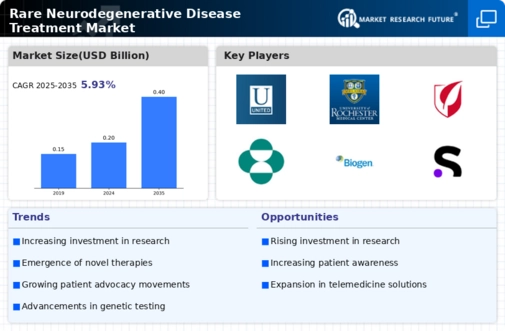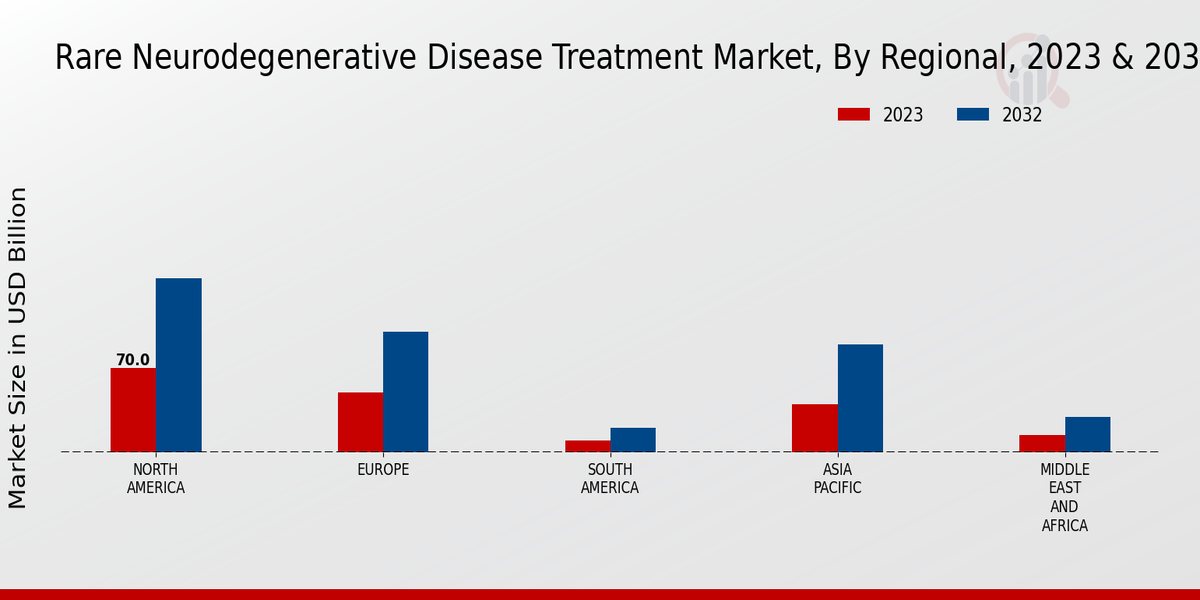Market Growth Projections
Government Initiatives and Funding
Government initiatives and funding play a crucial role in shaping the Global Rare Neurodegenerative Disease Treatment Market Industry. Various countries are implementing policies to support research and development in rare diseases, recognizing the need for effective treatments. For instance, the Orphan Drug Act in the United States provides incentives for companies developing therapies for rare diseases. Additionally, funding from government agencies and non-profit organizations is increasing, facilitating clinical trials and research projects. This support not only encourages innovation but also enhances the overall market landscape, making it more conducive for new entrants and established players alike.
Growing Patient Advocacy and Awareness
The rise of patient advocacy groups and increased awareness about rare neurodegenerative diseases are significant factors influencing the Global Rare Neurodegenerative Disease Treatment Market Industry. Organizations dedicated to specific diseases are actively promoting research, funding, and awareness campaigns, which help to educate the public and healthcare professionals. This heightened awareness leads to earlier diagnosis and treatment, ultimately improving patient outcomes. Furthermore, these advocacy groups often collaborate with pharmaceutical companies to facilitate clinical trials, thereby accelerating the development of new therapies. As a result, the market is likely to see an influx of innovative treatments driven by patient needs.
Emerging Markets and Global Collaboration
Emerging markets are becoming increasingly important in the Global Rare Neurodegenerative Disease Treatment Market Industry. Countries in Asia and Latin America are witnessing a rise in healthcare investments, leading to improved access to treatments for rare diseases. Collaborative efforts between global pharmaceutical companies and local firms are fostering innovation and expanding market reach. These partnerships often focus on developing affordable treatment options tailored to the needs of local populations. As these markets continue to grow, they present new opportunities for companies to introduce their therapies, thereby contributing to the overall expansion of the market.
Advancements in Biotechnology and Pharmaceuticals
Technological advancements in biotechnology and pharmaceuticals are pivotal drivers of the Global Rare Neurodegenerative Disease Treatment Market Industry. Innovations in gene therapy and personalized medicine are enabling the development of targeted treatments that address the underlying causes of these diseases. For example, therapies utilizing CRISPR technology show promise in treating genetic disorders. The integration of artificial intelligence in drug discovery is also accelerating the identification of potential therapies. As these technologies mature, they are expected to enhance treatment options significantly, thereby increasing market growth and attracting investment in research and development.
Increasing Prevalence of Rare Neurodegenerative Diseases
The Global Rare Neurodegenerative Disease Treatment Market Industry is experiencing growth due to the rising incidence of rare neurodegenerative diseases. As awareness increases, more cases are being diagnosed, leading to a greater demand for effective treatments. For instance, diseases such as Huntington's disease and amyotrophic lateral sclerosis (ALS) are becoming more recognized, contributing to the market's expansion. In 2024, the market is valued at 0.2 USD Billion, and projections indicate it could reach 0.4 USD Billion by 2035. This growth reflects a compound annual growth rate (CAGR) of 6.6% from 2025 to 2035, highlighting the urgent need for innovative therapies.























